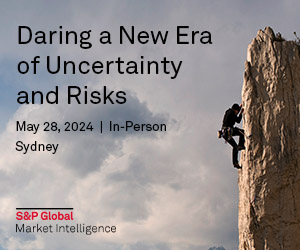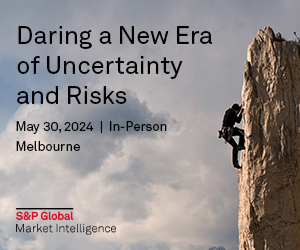
HESTA leads on sustainability engagement
HESTA was the first Australian superannuation fund to commit to a 2050 net-zero target and has also put in place a climate-change transition plan to obtain a 33 per cent reduction in portfolio carbon emissions by 2030. Mary Delahunty, head of impact at HESTA in Melbourne, talks to KangaNews about the fund’s sustainability strategy.
It is often said that one of the biggest challenges in the environmental, social, and governance (ESG) world is the availability of consistent data and metrics. Is this a fair assessment and, if so, how is HESTA working to overcome it?
The tools exist in one form or another but the complexity arises from the lack of consistency across approaches. For example, there are perhaps two or three emerging leaders in the provision of data on physical risk that have been the most advanced in the way we assess climate-risk on buildings, production lines and supply chains.
Over time, more tools will coalesce around particular strategies. This consistency will drive good outcomes because it means asset owners running complex portfolios across multiple asset classes will be able to see year-on-year patterns and take lessons from their peers – because the underlying assumptions and metrics are the same.
We had to be sure we can measure properly before we announced our net-zero by 2050 target, so we have a good understanding of our carbon risk. We have advanced tools in some asset classes and we have sufficiently advanced proxies in others to be able to understand what our climate risk is.
The other tool that is important to put in place is a solid planning scenario across the whole portfolio, to be able to develop conviction on the top risks from a changing climate.
We conducted scenario analysis before we made our net-zero commitment. This shows the GDP outcomes of a warming planet across a few different temperature scenarios. The greatest risk to the portfolio is disorderly transition. This risk is heightened by our large exposure to Australian businesses and the lack of policy certainty in this country.
Speaking of the policy environment, with the COP26 summit rapidly approaching the fact that the Australian government has no formal net-zero commitment is gaining more attention. Is it a challenge to operate in a country with such a significant policy vacuum?
Yes it is – on several fronts. There is no room for conversations about what opportunities exist in this country because it is so binary. Hopefully we have moved on from arguing about whether or not we believe in climate change – but we have not moved far.
We need an end point to allow several other conversations and settings. A net-zero target sets an ambition that will gather ideas and allow certainty for investment. Not having this is a great loss to this country.
The other way it potentially damages members’ retirement outcomes is because investors like HESTA are large and international – we are universal owners. Studying investment environments such as Europe, it is starting to look like countries such as Australia will be punished for not understanding climate risk in trading partnerships. This is the risk of a disorderly transition where there are competing policy objectives.
There is this very hard-line economic argument, but there is also the universal-owner perspective. When we are looking at environmental risk, it does not really matter whether we can walk away from certain stocks in the portfolio because the risk still exists as the carbon is in the atmosphere.
We need to work out how we make sure Australia, as a nation, is pulling its weight to reduce this risk – because it exists for our members regardless of their portfolio.
Is there anything a super fund like HESTA can do to push the Australian government on setting targets?
Investors have an obligation to remind those setting policy about what it is that concerns us, and what risk is coming over the hill. HESTA’s risks are duplicated because our members primarily work in health and community services. We have an obligation to speak to those in power to fit policy conditions to allow change.
We have recently taken advocacy positions that allow us to have a voice to government, for example on the need for some mechanism of carbon pricing.
It is difficult to find a nuanced conversation while the issue is so politically fraught. This is a great shame because we are often painted as activists instead of being correctly viewed as an institutional investor seeking to relieve risks to its members’ returns.
Policymakers leave a lot of brainpower out of the room if they do not bring the institutional-investment community in to discuss what it means to set a net-zero target and preconditions for opportunities for investment and growth, and justly transition communities away from industries we know do not have a place in the future environment.
As well as lack of government commitment to net zero, there is growing noise in global capital markets about sovereign risk in countries, like Australia, that are fossil-fuel intensive. What is HESTA’s position?
There is sovereign risk: an increasing chance of there being a risk to the valuation and the attractiveness of Australian sovereign debt due to the difference between the way in which the rest of the world considers climate risk and the way our government has built it into policy. This has recently been made very clear by the Norwegian sovereign fund.
It was painted as if it was taking some form of activist approach, but this interpretation is simply unhelpful. We need to advance the conversation on what international investors are looking for, our inability correctly to adjust for a changing climate and the risk this presents to the prosperity of our nation and the ability of our government to repay debt. This is the conversation we need to have, instead of simply dismissing the calculation one of the world’s biggest investors has made.
Why is it important for asset owners to join alliances like the Paris-Aligned Asset Owners Group – and what does HESTA aim to achieve from doing so?
There are two reasons why this is important. The first is to create and ensure there is an ongoing sense of urgency toward other asset owners or managers making similar sorts of commitments, and then drive finance to solutions and a greater understanding of risks. By showing leadership and joining a cohort of others, we get to increase the sense of urgency.
The other important element is that we join these investor collaborations and similar groups to learn from our international peers and to work on systemic approaches together. The greatest threat to the portfolio is at system level and perhaps also at the policy level, so we need to be among like-minded organisations in order to speak to the system and protect members’ retirement outcomes. Groups give us a forum to engage in conversations for learning.
How does HESTA decide which alliances and forums make sense for it to join?
We look at some of the underlying data sets they either subscribe to already or suggest we coalescence around. For this investor collaboration, we were pleased to be able to get more out of our commitment to science-based targets and then understand how to bring this type of decision-making into the portfolio because several other partners are using the same kind of strategy.
What is HESTA’s strategy to address transition, physical and liability risk at corporate level? In this context, does a super fund like HESTA have a duty to encourage a greater proportion of corporate Australia to transition to low-carbon and even net-zero strategies?
We absolutely do and we implement this in two ways. As asset owners, we become a steward of companies and so want to make sure we are cognisant of what drives long-term value. This is about understanding the transition to a new, low-carbon economy.
We also have the universal-owner lens. There are risks to holding a company in the portfolio, such as a pure-play thermal-coal company, that we simply cannot stomach. We can see these becoming a stranded-asset risk in the medium term and we should not hold them. But we are aware that if we sell such a company, somebody else buys it – and this does not take the carbon out of the atmosphere.
If we do this in the private market, we run the risk of it being picked up by a state actor, as well – which does not necessarily have the same motivation to drive companies through a transition.
We have an obligation to those we are investing on behalf of to create long-term value. But we also have a wider obligation because the risks to the portfolio do not go away just because we do not own a company any more. Large institutional investors need to understand the importance of the stewardship angle as well as the fact that we have a leadership obligation in this context.

HIGH-GRADE ISSUERS YEARBOOK 2023
The ultimate guide to Australian and New Zealand government-sector borrowers.

WOMEN IN CAPITAL MARKETS Yearbook 2023
KangaNews's annual yearbook amplifying female voices in the Australian capital market.










